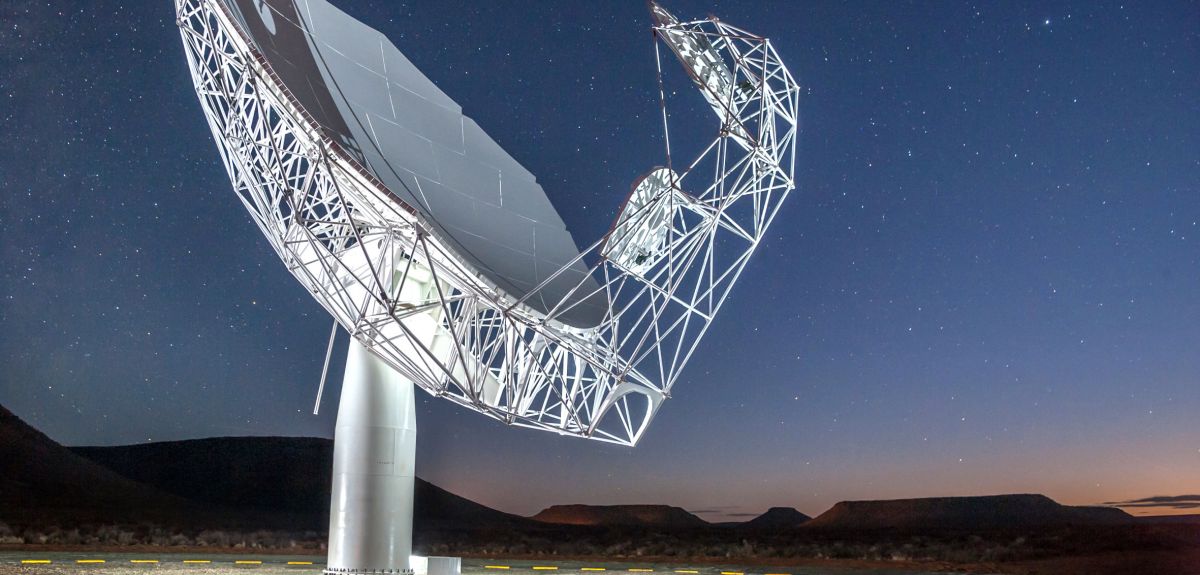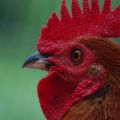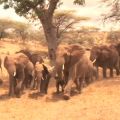
MeerKAT is shape of things to come
In a remote semi-desert region of South Africa, the Karoo veld, what looks like a huge satellite dish has risen up to dominate the landscape.
But instead of tuning into TV this dish is the first part of a giant radio telescope called MeerKAT that will play a key role in the creation of the world’s largest telescope, the Square Kilometre Array (SKA).
Last week saw the official launch of this first dish of many, I asked Matt Jarvis of Oxford University's Department of Physics, one of the Oxford scientists involved in MeerKAT, about plans for the new telescope and where it will lead…
OxSciBlog: What is MeerKAT and why is it important?
Matt Jarvis: MeerKAT is actually made up of 64 dishes, each 13.5m in diameter. All of these dishes are connected to make up a single telescope that operates at radio wavelengths (around medium-wave for the people who still have analogue radios), much like a satellite dish but rather than receiving information from satellites it detects radio waves from astrophysical phenomena such as jets emanating from around black holes and sites of star formation. It is the precursor to the Square Kilometre Array which will extend MeerKAT from 64 to 254 dishes in around 2020, making it much more powerful.
OSB: What questions will MeerKAT investigate?
MJ: MeerKAT will detect radio waves from the distant reaches of the cosmos. It allows us to trace a range of physical processes that occur in the Universe, such has high-speed jets (moving at close to the speed of light) which arise from accretion around black holes, both in our own galaxy and from supermassive black holes in the centres of distant galaxies. It will also be able to detect neutral hydrogen gas, the fundamental building block of all the things that we can see in the Universe, from stars to galaxies, enabling us to determine how this gas gets turned into stars over the history of the Universe. By using the radio emission from these distant galaxies we will also be able to investigate the impact of Dark Energy and Dark Matter in the Universe and how these may evolve, possibly leading us to reassess how gravity acts on very large scale.
OSB: How are Oxford scientists involved in the project?
MJ: Oxford has a large involvement in MeerKAT. Two of the Large Surveys to be undertaken on MeerKAT are co-led by Oxford staff. I’m the co-PI of the deep radio continuum survey (MIGHTEE) to study how galaxies evolve over the history of the Universe and Rob Fender is the co-PI of the THUNDERKAT survey which aims to detect all of the phenomena which go bang, such as stars colliding together, bursts of radiation when a star dies and accretion events on to a black hole. We have also been involved in some of the technical development for the receivers on the dishes.
OSB: How will work with MeerKAT feed into SKA?
MJ: MeerKAT is essentially a stepping stone to the SKA, in terms of both science and engineering. The work we will do will set the stage for the SKA to really move us forward into a whole different regime of radio astronomy. MeerKAT will be a fantastic facility in its own right, providing us with the most sensitive radio surveys in the southern hemisphere, however, the SKA will be able to take such surveys and expand them by an order of magnitude in sensitivity and ability to map large volumes of the Universe. From a more technical perspective, the lessons learned from constructing MeerKAT will feed into the design specifications of the SKA, and will also mean that we can test new algorithms to turn the raw data into scientifically useful maps and catalogues for use throughout the community.
OSB: What are the challenges of dealing with data from MeerKAT/SKA?
MJ: The main challenges are the sheer data volume that we need to handle. For example, we are unable to store the raw data coming from the telescope, and have to reduce it very quickly in order to keep up with the observations. This requires a large effort in data transport, supercomputers and having the necessary computer code to handle the data effectively.
OSB: What is the next big milestone in MeerKAT's progress?
MJ: The next big milestone will be when there are 16 dishes on the ground and all hooked up. This will then enable us to start carrying out the science, before the whole 64 dishes are in place. This is something quite unique to radio astronomy, in that we don't need the whole telescope to start doing some of the science.
 Why males stray more than females
Why males stray more than females Do elephants call ''human!''?
Do elephants call ''human!''?